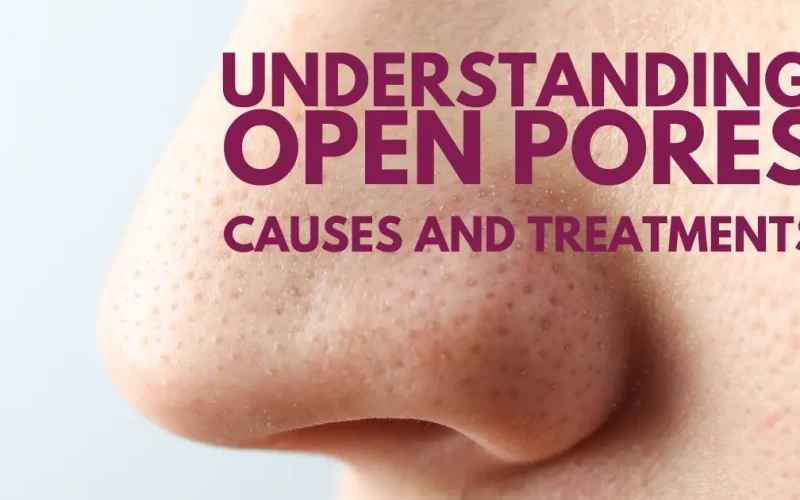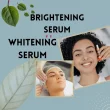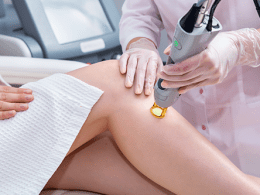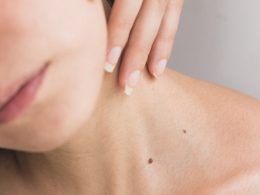Most of us notice them when we look in the mirror under natural light—small pits or holes on the surface of our skin, especially around the nose, cheeks, and forehead. These are open pores, and while they’re a completely normal part of human skin, enlarged or visible pores can be a cosmetic concern for many.
Despite the abundance of advice online, the science behind open pores is often misunderstood. Let’s take a closer look at what open pores actually are, what causes them to become more noticeable, and what treatment options are genuinely effective.
What Are Open Pores?
Pores are tiny openings in the skin that allow it to “breathe.” More accurately, they serve as exit points for sweat and sebum—the skin’s natural oil. Each pore is connected to a sebaceous gland that produces this oil, which helps moisturize and protect the skin.
Everyone has pores, but in some people, they appear larger or more visible. These are commonly referred to as “open pores,” although in reality, pores don’t open or close like doors. They may appear more prominent due to several contributing factors.
Common Causes of Enlarged Pores
There’s no single reason why pores become enlarged. It’s usually a combination of internal and external influences:
-
Excess Sebum Production –
People with oily skin types tend to have larger pores. When sebaceous glands produce more oil than necessary, the pores expand to release the excess, making them appear wider.
-
Genetics –
Pore size is largely determined by your genetic makeup. If your parents have large pores, you’re more likely to have them too.
-
Aging and Reduced Skin Elasticity –
As we age, our skin loses collagen and elastin—proteins responsible for skin firmness and elasticity. This loss causes the skin around the pores to sag slightly, making them appear more open.
-
Sun Damage –
Prolonged exposure to UV rays can thicken the skin and weaken the supportive collagen beneath it. Over time, this contributes to more visible pores and uneven skin texture.
-
Clogged Pores –
When dead skin cells, oil, and dirt accumulate in pores, they stretch out. This is often how blackheads form. The more they get clogged, the larger the pores may appear over time.
Effective Treatments for Open Pores
While it’s not possible to eliminate pores completely (nor should you want to—they’re essential for skin function), you can minimize their appearance significantly with proper care and the right treatments. Let’s take a look at the most feasible open pores treatment options:
- Cleanse Regularly (But Gently) – Use a mild, non-comedogenic (non-pore-clogging) cleanser twice a day. This helps keep the skin free from oil, dirt, and impurities without stripping it of natural moisture.
- Exfoliate to Remove Dead Skin – Chemical exfoliants such as salicylic acid (a BHA) and glycolic acid (an AHA) penetrate the pores and dissolve dead skin and oil. This not only clears out blockages but also helps tighten the pore walls over time.
- Topical Retinoids – Retinoids, derived from Vitamin A, are one of the most effective ingredients for improving skin texture. They work by increasing cell turnover, reducing oil production, and stimulating collagen, all of which help minimize pore visibility.
- Hydration and Moisturizing – Well-hydrated skin maintains its elasticity better, which can prevent pores from stretching. Opt for oil-free or gel-based moisturizers if you have oily or combination skin.
- Clay Masks – Clay-based products can help absorb excess oil and temporarily shrink the appearance of pores. Use them 1–2 times a week for best results.
- Niacinamide (Vitamin B3) – This multi-functional ingredient helps regulate oil production, improve skin tone, and strengthen the skin barrier—all contributing to smaller-looking pores over time.
- Professional Treatments – For individuals looking for faster or more pronounced results, dermatological procedures are an excellent option. Some of the most effective ones include:
-
- Microneedling: Stimulates collagen production by creating micro-injuries in the skin.
- Laser Resurfacing: Removes the outer layer of skin and boosts collagen to tighten skin and reduce pore size.
- Chemical Peels: Controlled application of acid solutions to exfoliate deeper layers of skin and unclog pores.
- Radiofrequency Therapy: Tightens the skin through heat stimulation, which in turn makes pores less noticeable.
Can You Prevent Enlarged Pores?
While you can’t change your genetics or stop aging, you can take preventive steps to reduce the likelihood of pores becoming more visible:
- Always wear sunscreen to protect against UV damage.
- Avoid sleeping with makeup on—it clogs pores and stretches them over time.
- Follow a consistent skincare routine, particularly if you have oily or acne-prone skin.
- Don’t squeeze or pick at blackheads or acne, which can damage the pore and cause scarring or permanent enlargement.
When to See a Dermatologist
If you’re struggling with enlarged pores despite following a solid skincare routine, it may be time to consult a skin expert. A qualified dermatologist in Bangalore can help assess your skin type, rule out underlying issues, and suggest targeted treatments—whether topical, procedural, or a combination of both.
Dermatologists also ensure that your treatment plan is safe and tailored to your individual needs, reducing the risk of irritation or worsening the condition through inappropriate products.
Conclusion
Open pores are a normal part of skin anatomy, but when they become more visible, they can affect how we feel about our appearance. Fortunately, with a better understanding of the causes and a commitment to effective skincare practices—or professional help when needed—you can significantly improve skin texture and confidence.
Understanding your skin is the first step. Acting on that knowledge is what truly makes the difference.












